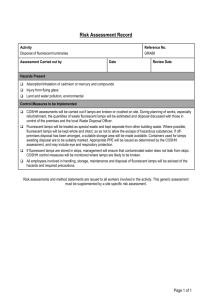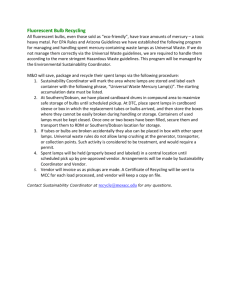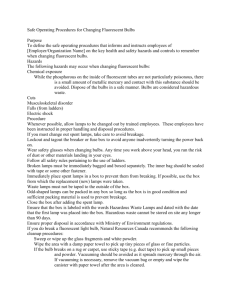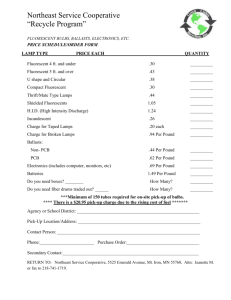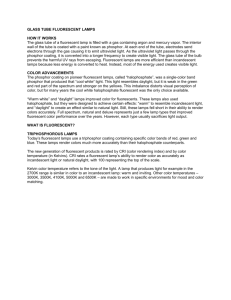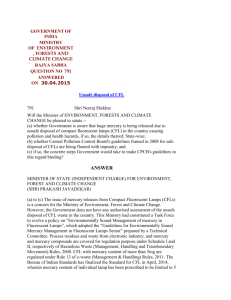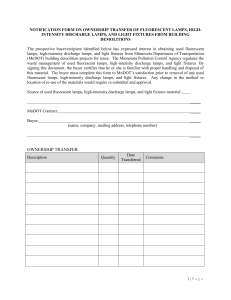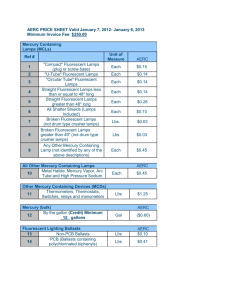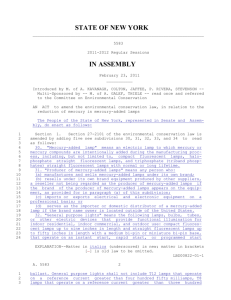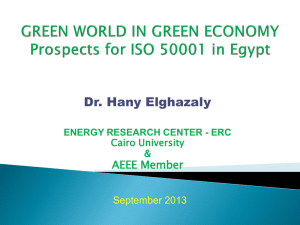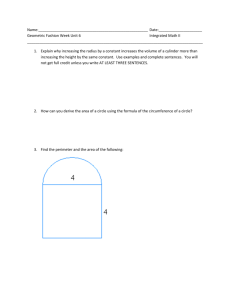Fluorescent Light Bulb Disposal - The University of Texas at Austin
advertisement
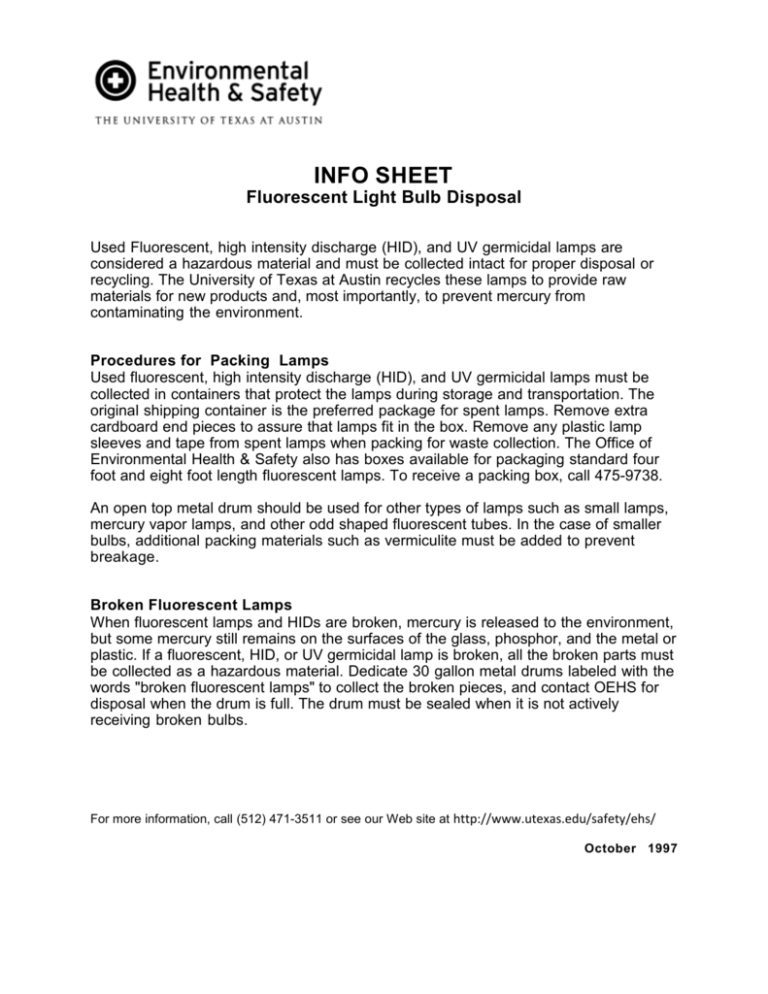
INFO SHEET Fluorescent Light Bulb Disposal Used Fluorescent, high intensity discharge (HID), and UV germicidal lamps are considered a hazardous material and must be collected intact for proper disposal or recycling. The University of Texas at Austin recycles these lamps to provide raw materials for new products and, most importantly, to prevent mercury from contaminating the environment. Procedures for Packing Lamps Used fluorescent, high intensity discharge (HID), and UV germicidal lamps must be collected in containers that protect the lamps during storage and transportation. The original shipping container is the preferred package for spent lamps. Remove extra cardboard end pieces to assure that lamps fit in the box. Remove any plastic lamp sleeves and tape from spent lamps when packing for waste collection. The Office of Environmental Health & Safety also has boxes available for packaging standard four foot and eight foot length fluorescent lamps. To receive a packing box, call 475-9738. An open top metal drum should be used for other types of lamps such as small lamps, mercury vapor lamps, and other odd shaped fluorescent tubes. In the case of smaller bulbs, additional packing materials such as vermiculite must be added to prevent breakage. Broken Fluorescent Lamps When fluorescent lamps and HIDs are broken, mercury is released to the environment, but some mercury still remains on the surfaces of the glass, phosphor, and the metal or plastic. If a fluorescent, HID, or UV germicidal lamp is broken, all the broken parts must be collected as a hazardous material. Dedicate 30 gallon metal drums labeled with the words "broken fluorescent lamps" to collect the broken pieces, and contact OEHS for disposal when the drum is full. The drum must be sealed when it is not actively receiving broken bulbs. For more information, call (512) 471-3511 or see our Web site at http://www.utexas.edu/safety/ehs/ October 1997
